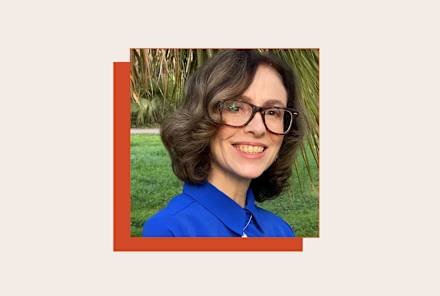Advertisement
Why Nasal Breathing Matters, Now More Than Ever

In a single breath, more molecules of air will pass through your nose than all the grains of sand on all the world's beaches—trillions and trillions of them. For the past 13.8 billion years, this wayward matter has been split apart by sunlight, spread throughout the universe, and come back together again. To breathe is to absorb ourselves in what surrounds us, to take in little bits of life, understand them, and give pieces of ourselves back out. Respiration is, at its core, reciprocation.
And respiration through the nose is essential, for so many ways, for so many reasons. For starters, our bodies operate most efficiently in a state of balance, pivoting between action and relaxation, daydreaming and reasoned thought. This balance is influenced by the nasal cycle and may even be controlled by it.
The right nostril is a gas pedal.
When you're inhaling primarily through this channel, circulation speeds up, your body gets hotter, and cortisol levels, blood pressure, and heart rate all increase. This happens because breathing through the right side of the nose activates the sympathetic nervous system, the "fight or flight" mechanism that puts the body in a more elevated state of alertness and readiness. Breathing through the right nostril will also feed more blood to the opposite hemisphere of the brain, specifically to the prefrontal cortex, which has been associated with logical decisions, language, and computing.
The left nostril works as a kind of brake system to the right nostril's accelerator.
The left nostril is more deeply connected to the parasympathetic nervous system, the rest-and-relax side that lowers temperature and blood pressure, cools the body, and reduces anxiety. Left-nostril breathing shifts blood flow to the opposite side of the prefrontal cortex, the right area that plays a role in creative thought, emotions, formation of mental abstractions, and negative emotions.
In 2015, researchers at the University of California, San Diego, recorded the breathing patterns of a schizophrenic woman1 over the course of three consecutive years and found that she had a "significantly greater" left-nostril dominance. This breathing habit, they hypothesized, was likely overstimulating the right-side "creative part" of her brain, and as a result prodding her imagination to run amok. Over several sessions, the researchers taught her to breathe through her right, "logical" nostril, and she experienced far fewer hallucinations.
Nasal breathing as the "great secret of life."
While Eastern cultures have regaled the wonders of nasal breathing for millennia, it wasn't until the 19th century that much of the Western population got wind of it. It happened thanks to an adventurous artist and researcher named George Catlin. Catlin spent six years traveling thousands of miles throughout the Great Plains, covering more distance than Lewis and Clark to document the lives of 50 Native American tribes.
He went up the Missouri to live with the Lakota Sioux. He met with the Pawnee, Omaha, Cheyenne, and Blackfeet. Along the banks of the upper Missouri, he happened upon the civilization of the Mandan, a mysterious tribe whose members stood 6 feet tall and lived in bubble-shaped houses. Many had luminous blue eyes and snow-white hair.
Catlin realized that nobody really knew about the Mandan, or other Plains tribes, because no one of European descent had bothered to spend time talking to them, researching them, living with them, and learning about their beliefs and traditions.
Having never seen a dentist or doctor, the tribal people had teeth that were perfectly straight—"as regular as the keys of a piano," Catlin noted. Nobody seemed to get sick, and deformities and other chronic health problems appeared rare or nonexistent. The tribes attributed their vigorous health to a medicine, what Catlin called the "great secret of life." The secret was breathing.
The Native Americans explained to Catlin that breath inhaled through the mouth sapped the body of strength, deformed the face, and caused stress and disease. On the other hand, breath inhaled through the nose kept the body strong, made the face beautiful, and prevented disease.
"The air which enters the lungs is as different from that which enters the nostrils as distilled water is different from the water in an ordinary cistern or a frog pond," he wrote.
The research on how nasal breathing can help your sinuses, sleep, and more.
More than a hundred years later, Mark Burhenne, a dentist and sleep researcher in Northern California, had been studying the links between mouth-breathing and sleep2. He'd found that mouth-breathing contributed to periodontal disease and bad breath, and he believed it was the No. 1 cause of cavities, even more damaging than sugar consumption, bad diet, or poor hygiene. Burhenne also found that mouth-breathing was both a cause of and a contributor to snoring and sleep apnea. He recommended his patients tape their mouths shut at night.
"The health benefits of nose breathing are undeniable," he said. One of the many benefits is that the sinuses release a huge boost of nitric oxide, a molecule that plays an essential role in increasing circulation and delivering oxygen into cells. Immune function, weight, circulation, mood, and sexual function can all be heavily influenced by the amount of nitric oxide in the body.
Nasal breathing alone can boost nitric oxide sixfold, which is one of the reasons we can absorb about 18% more oxygen than by just breathing through the mouth. Mouth taping, Burhenne said, helped a 5-year-old patient of his overcome ADHD, a condition directly attributed to breathing difficulties during sleep. It helped Burhenne and his wife cure their own snoring and breathing problems. Hundreds of other patients reported similar benefits.
Nitric oxide has also been shown in laboratory tests to increase the survival rate of mammalian cells infected with coronavirus. Inhaled nitric oxide is now being studied as a therapy to help restore lung function and boost immune response in patients with severe symptoms of COVID-19.
My experience with mouth taping.
How to apply mouth tape, or "sleep tape" as it's also called, is a matter of personal preference, and everyone I talked to had their own technique. Burhenne liked to place a small piece horizontally over the lips; Kearney preferred a fat strip over the entire mouth. The internet was filled with suggestions. One guy used eight pieces of inch-wide tape to create a sort of tape goatee. Another used duct tape. A woman suggested taping the entire lower half of the face.
To me, these methods are ridiculous and excessive. Eventually I realized that all I or anyone really needed was a postage-stamp-size piece of tape at the center of the lips—a Charlie Chaplin mustache moved down an inch. That's it. This approach felt less claustrophobic and allowed a little space on the sides of the mouth if I needed to cough or talk. After much trial and error, I settled on 3M Nexcare Durapore "durable cloth" tape, an all-purpose surgical tape with a gentle adhesive. It was comfortable, had no chemical scent, and didn't leave residue.
In the three nights since I started using this tape, I went from snoring four hours to only 10 minutes. I'd been warned by Burhenne that sleep tape won't do anything to help treat sleep apnea. My experience suggested otherwise. As my snoring disappeared, so did apnea.
Now, sitting in bed, with a little stamp of white tape stuck to my lips, I flipped to the last page in Catlin's Breath of Life, the final paragraph he'd ever publish in his long life of research.
"And if I were to endeavor to bequeath to posterity the most important Motto which human language can convey, it should be in three words— SHUT-YOUR-MOUTH... Where I would paint and engrave it, in every Nursery, and on every Bedpost in the Universe, its meaning could not be mistaken."
"And if obeyed," he continued, "its importance would soon be realized."
Adapted from Breath: The New Science of a Lost Art by James Nestor published on May 26, 2020, by Riverhead, an imprint of Penguin Publishing Group, a division of Penguin Random House LLC. Copyright © 2020 James Nestor.

These Are The Supplements Everyone Is Taking Right Now, According To An RD
Molly Knudsen, M.S., RDN

4 Signs You Would Benefit From A Creatine Supplement If You’re 40+
Molly Knudsen, M.S., RDN

Resting Heart Rate Is A Good Predictor Of Longevity—Here's How To Lower It
Molly Knudsen, M.S., RDN

These 3 Supplements Can Actually Improve Your Heart Health, According To An RD
Molly Knudsen, M.S., RDN

This Unexpected “Appetizer” Can Help Balance Your Blood Sugar
Molly Knudsen, M.S., RDN

These Are The Supplements Everyone Is Taking Right Now, According To An RD
Molly Knudsen, M.S., RDN

4 Signs You Would Benefit From A Creatine Supplement If You’re 40+
Molly Knudsen, M.S., RDN

Resting Heart Rate Is A Good Predictor Of Longevity—Here's How To Lower It
Molly Knudsen, M.S., RDN

These 3 Supplements Can Actually Improve Your Heart Health, According To An RD
Molly Knudsen, M.S., RDN

This Unexpected “Appetizer” Can Help Balance Your Blood Sugar
Molly Knudsen, M.S., RDN

These Are The Supplements Everyone Is Taking Right Now, According To An RD
Molly Knudsen, M.S., RDN

4 Signs You Would Benefit From A Creatine Supplement If You’re 40+
Molly Knudsen, M.S., RDN

Resting Heart Rate Is A Good Predictor Of Longevity—Here's How To Lower It
Molly Knudsen, M.S., RDN

These 3 Supplements Can Actually Improve Your Heart Health, According To An RD
Molly Knudsen, M.S., RDN

This Unexpected “Appetizer” Can Help Balance Your Blood Sugar
Molly Knudsen, M.S., RDN

These Are The Supplements Everyone Is Taking Right Now, According To An RD
Molly Knudsen, M.S., RDN

4 Signs You Would Benefit From A Creatine Supplement If You’re 40+
Molly Knudsen, M.S., RDN

Resting Heart Rate Is A Good Predictor Of Longevity—Here's How To Lower It
Molly Knudsen, M.S., RDN

These 3 Supplements Can Actually Improve Your Heart Health, According To An RD
Molly Knudsen, M.S., RDN

This Unexpected “Appetizer” Can Help Balance Your Blood Sugar
Molly Knudsen, M.S., RDN








